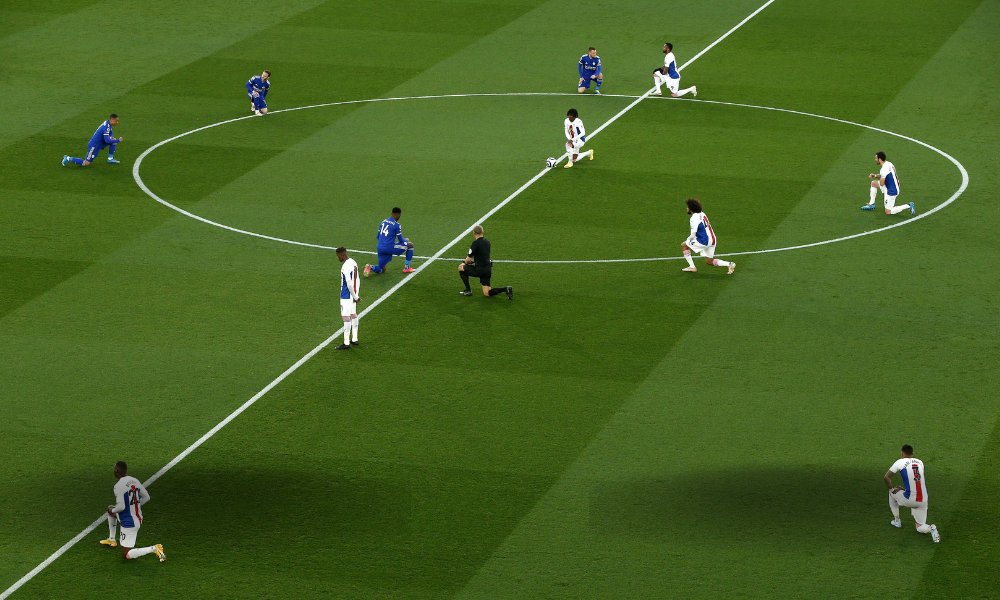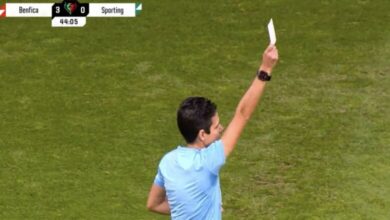
Football is arguably the most popular and old sport across the world. The reach of football has always been increasing since its beginning back in the 19th century. In recent years, football has had tremendous viewers, followers, and lovers from various Asian countries. It is one of the most highly intense game and the intensity arises from ground reach among fans in the stadium and viewers watching at home.
The football consists of 11 players with different positions to play, some substitute players, and 3 referees who primarily participate in a professional football match. Like any sport, football also has certain rules which are followed during the game. Along with football rules, the dimension of football grounds also has an important place.
The football ground is broadly made of natural or artificial turf for a professional football match. Football governing body has allowed artificial surfaces to be green in colour. However, amateur and recreational teams usually play on dirt ground or surfaces without grass. The game is played with a hollow spherical ball, and players kick or shoot the ball into the netted area of the opposition without using a hand or arm, and this will count as a goal.
The team with a higher number of goals is declared the game’s winner. The temperature of the football game is so high that even a single creates a strong storm in the whole ground and stadium. The total time duration of the game is 90 minutes, separated by two halves of 45 minutes each. However, in case none of the teams can score in 90 minutes, then the game is declared as a draw or extended by extra times or even a penalty shot out, depending upon the format of the game played.
In this article, you will learn about football ground dimensions, goal post size, penalty box size, corner flag, and much more related to football games.
Football ground dimension
Different sizes of football grounds exist where professional and semi-professional matches are played. However, the official governing body of football across the world, the Federation Internationale de Football Association (FIFA), declared that the football ground dimension should be 105×68 meters. Whatever changes in rules or new additions in rules have happened under FIFA.
It becomes highly pleasant to watch a football match if you have an idea about football ground dimensions, football size, and other details of the game. So, here I’m giving a brief detail about them so that you can enjoy the match to the fullest.
According to FIFA, a football field should have specific minimum and maximum dimensions:
- The length has to be a minimum of 90 meters and a maximum of 120 meters
- The width has to be a minimum of 45 meters and a maximum of 90 meters
For International matches, the size has to be:
- The length has to be a minimum of 100 meters and a maximum of 110 meters
- The width has to be a minimum of 64 meters and a maximum of 75 meters
The football ground dimension of the world’s top clubs is 105 × 68 meters. Some of the world’s most renowned clubs and their dimension are:
- Ream Madrid – Santiago Bernabeu – 105 × 68 meters
- FC Barcelona – Camp Nou – 105 × 68 meters
- England – Wembley – 105 × 68 meters
- Manchester City – City of Manchester – 105 × 68 meters
- Liverpool – Anfield – 105 × 68 meters
- Arsenal – Emirates Stadium – 105 × 68 meters
- Chelsea – Stamford Bridge – 103 × 67 meters
- Manchester United – Old Trafford – 105 × 68 meters
- AC Milan – San Siro – 105 × 68 meters
- Bayern Munich – Allianz Arena – 105 × 68 meters
The Football Size
The importance of the football size is as important as the football ground size. A hollow spherical ball is used for the game with a 68-70 centimetres circumference. It usually weighs around 395 to 455 grams. For professional football matches, a football of size 5 is used and those who are above 14 years can play with this size.
Depending on the age of the player and the type of game they are playing, football sizes are categorized into various types they are as follows:
Football circumference for kids and youth
- Size 3 is the official football size for toddlers and young children. It broadly has a circumference of 23-24 inches and a weight of 310-340 grams. Usually, from age 6 to 9, play with this football.
- Size 4 is the official football size for children between 9 and 13. It has a 25-26 inches circumference and a weight of 310 to 370 grams.
- Size 5 is the official football size for ages 14 years and beyond. It’s the same football size used in international football matches.
Features of the official football size 5:
- Weight 400 to 450 grams
- Circumference: 27 to 28 inches
- Diamter: 8.6 to 9 inches
- Radius: 4.3 to 4.5 inches
- Pressure: 8.5 to 15.6 PSI
Football goal post size
The goalpost is the place where every player wants to shoot the ball. This is the watched, highlighted, and protected place in the football ground. The goalpost is a rectangular shape built of a net and rods placed in the centre of each goal line. The backside of the goalpost is fixed on the ground.
The distance between two equidistant rods is 7.32 meters, and the distance between the ground and the upper horizontal rod is 8 feet (2.44 meters). Football officials declared white colour for the net and rods or crossbar. The rods are made up of metal or any officially approved material. A straight line is drawn between the two posts on the ground, and when the football crosses the line, a goal is scored.
Penalty area size & dimension
Pentaly is given in a match when there is a hand or tackle foul. The penalty area is the box where the goalkeeper uses a hand to stop the ball from entering the goalpost, and the region is called the goalkeeper’s area. The penalty area is the most sensible and critical area of the match where any players of either team don’t want to get fouled because it is directly given into a penalty shoot.
A penalty area is in rectangle shape with dimensions of length 16.5 meters and width 40 meters. A penalty mark is made at a distance of 10.9 meters from the midpoint of the goal line, and an arc of a circle with a radius of 9.14 meters from the centre of each penalty mark is drawn.
FIFA’s laws of the game state that: “All free kicks are taken from the place where the offense occurred, except: indirect free kicks to the attacking team for an offense inside the opponents’ goal area are taken from the nearest point on the goal area line which runs parallel to the goal line, and free kicks to the defending team in their goal area may be taken from anywhere in that area.”
Goal box size & dimension
The goal box is built inside the football ground’s penalty area. Its dimension is 10.9 meters in length and 18.28 meters in width inside the penalty area. Each football goal size is designed to fulfil the needs of specific age groups and team sizes. The Football Association (FA) has given dimensions of the goal box for each age group, which are as follows:
- 11 A-Side: The 11-a-side game for players aged 14 and over commends a football goal size with the dimensions 24ft x 8ft (7.32m x 2.44m). This is the goal post size used for all international leagues and tournaments around the world.
However, for players who come under under-13 and 14 categories, the football goal dimensions are decreased to 21ft x 7ft (6.4m x 2.13m).
- 9-A Side Games: The 9-a-side game for under-11 and 12 commend a football goal with dimensions of 16ft x 7ft. This was proposed by FA and introduced to the guidelines in 2013. This was done as an intermediate step between the 7-a-side and 11-a-side games. This is done to advancement from one type of football game to another.
- 7-A Side Games: Both the 7-a-side and 5-a-side games for age ranges under & 10 and under 8 & 7 respectively, recommend the use of a 12ft x 6ft (3.66m x 1.83m) football goal post. This goal post is commonly referred to as a ‘Mini Soccer’ football goal post.
- 5-A Side Games: On a regular, the term “5-a-side posts” refers to goalposts that measure to dimensions 12ft x 4ft (3.66m x 1.22m) or 16ft x 4ft (4.88m x 1.22m). This football goal post size is designed to be used on smaller artificial turfs and in indoor 5-a-side games.
What is a corner flag on football grounds?
In the football ground dimension, the corner flag also called a flag post, is situated in each corner of the football ground. At each of the flags, a radius of the 1-meter arc is drawn facing towards the ground, where a corner kick is taken. A corner kick is taken when the ball crosses the goal line from the touch of the opponent players.
According to the UEFA guideline, the dimensions of the corner flag are:
- Pole length: 6.4 feet (1.9m)
- Pole length in ground: 5 feet (1.5m)
- Ground sleeves: 1.3 feet (0.4m)
- Flags: 30cm x 30cm
- Pole Diameters available: 50mm (2 in) or 30mm (1.2 in)
Poles are made up of waterproof, heavy-duty PVC, and flags are constructed from ultra-durable nylon. Poles are usually of plastic ground sleeves with the option to upgrade to a metal socket.
What is the interchange area in the football ground?
The interchange area is an extended area of the rectangular football ground where substitute players warm up.
The area for interchange starts 1 meter on either side of the touchline from the halfway line and extends 1 meter from the field of play. This is present in every kind of professional match.
Why is the centre mark on football grounds?
In football grounds, a circle-shaped mark is drawn at the centre/middle of the rectangular ground. To begin the game at an equal level for both teams, the game starts from the center mark. It applies in the beginning and during half-time of the game.
What is a technical area in football ground?
The technical area is the area where a box is created in front of each team’s dugout outside of the rectangular field. The manager of the team guides his players during the match. Medical staff and other fitness staff and presence in technical.
The technical area also consists of multiple connected seating chairs along with first aid energy drinks and other stuff.
Importance of grass on football ground
The grass is probably one of the most important things in football, along with football ground dimension, goal post size, centre mark, and more. The grass is broadly of two types: natural turf and artificial turf. All of the major professional football ground has one of these two types of grass.
The good quality of the grass plays a crucial role in matches, such as the player being safe from injury when he/she falls, the running speed being good, and the shoe gets a great grip for running. Good quality grass can be categorized based on its length, type, and drainage.
The grass length
Primarily, grass length on football ground is 20-25 millimeters. The grass is regularly cut from side to side depending on its length. Cutting grass brings visible stripes on the grass. This gives the referees vertical references, which helps spot offsides easily during the game.
The grass type
Different grass types used in a football ground majorly depend on the climate and location. In cooler locations, grass species like ryegrass, meadow grass, and tall fescue are used. However, species such as bermudagrass, zoysia species, and seashore paspalum are used in warmer places.
The drainage
The drainage is as important as grass type and grass length on a good football ground. UEFA has given guidelines to consider for the drainage of the football ground. It should be a sand-dominated root zone below the pitch turf to save ground from heavy rain.
Underlying this sand-dominated zone is a pipe-drained sub-base that keeps the ground in a much ideal state to play the matches.
From now on, you will watch football with more knowledge of the football ground dimension. Have a happy football watching.




